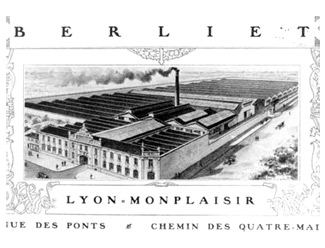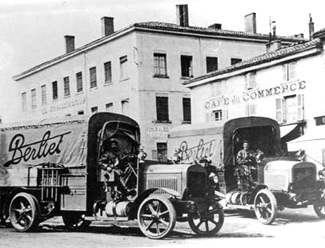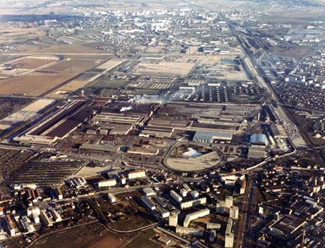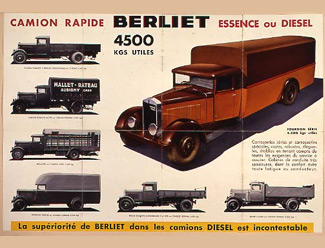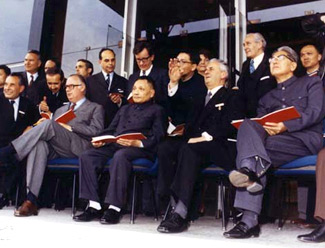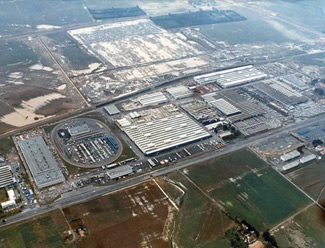The historical record of Berliet
Marius Berliet was born in 1866, in the industrial area of « La Croix Rousse ». His father’s side came from the north of the Dauphiné, around 30 miles from Lyon, where many generations worked as ploughmen. His grand father left the countryside at the beginning of the 19th century and worked in a tulle factory in Lyon. His father had created a small workshop fabricating material for hats. His mother Lucie Fabre came from the south of France.
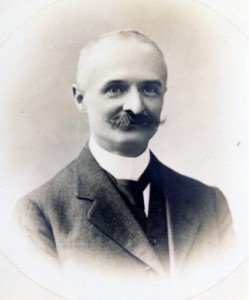
Marius Berliet en 1905
The Berliet and Fabre families belong to the « Petite Église », some Catholics who rejected the 1801 Concordat. He is the elder of 7 children.
Marius Berliet got his A level in 1881, at the age of 15, first apprentice Weaver, and then joined his father’s workshop. He attended evening courses, in mechanics and English.
At the age of 24 he added to his father’s activities the fabrication of synthetic leather and the embossing of material. He invented too, a machine to roll ribbons.
Addicted to mechanics, he built his first engine in 1894, and his first car in 1895.
In 1899 he bought a site of 900 sqfeet in Lyon, then rented a workshop of 4500 sqfeet in 1900.
In 1902 he purchased the factory of Audibert Lavirotte (1,2 acre), start of the Monplaisir Berliet factory.
In 1905, he sold the license of 3 cars, 22, 40 and 60 hp to ALCO (American Locomotive Company), which allowed him to finance his own industrial development.
The locomotive with its rail buffalo catcher becomes the logo of the Berliet trademark.
In 1912, export sales represent 50% of the sales. The same year, a German team wins the Monaco Rally with a standard Berliet car. In 1913 3500 cars are built in the 12-acre new Monplaisir factory.
In 1914, 6000 shells are made daily, then 40 military trucks per day in 1916 (CBAs) and finally 1050 Renault armoured tanks during 1918.
From 1916, Marius Berliet bought a 1,000-acre piece of land in Venissieux-Saint Priest, and 2 years later the integrated factory is operational from making steel to complete vehicles.
Even though going into receivership in 1921, the Company, which became a limited liability company, started to build diesel engines in 1930, and launched the first Sahara desert raids (1926-1932) and then concentrated its activities in heavy vehicles.
During World War 2, until 1942, the manufacturing of engines using gas generator from wood was still allowed for the south zone of France. But then the French Government of Vichy compelled the production to be delivered to the Germans.
At the end of the war, the Berliet Company is put under sequestration and managed by its workers, the so-called Berliet Experience. The Company will be given back to its owners in 1949, year of Marius Berliet’s death.
As per the principles of the « Petite Eglise »Marius Berliet designated his successor: Paul, born in 1918, the penultimate child.
He became the Managing Director under the chairmanship of Emile Parfait in 1950.
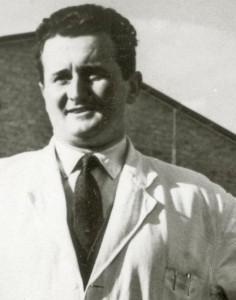
Paul Berliet 1951
From a production of 17 trucks a day, he increased it up to 140 in 1974.
Berliet develops exports to European countries and set up a strategy of transfer of technology to developing countries to satisfy their local needs from 1958.
Among others:
- Creation of Berliet Algeria and start of an assembly line in 1958
- Creation of Berliet Morocco in 1958
- Transfer of technology with China for 4 different types of heavy vehicles in 1965
- Contract for a bus factory in Cuba in 1969
- Contract of industrialisation with Algeria for a range of 7 vehicles in a purposely designed and built factory, 750 acres, 10 000 workers in 1970
- Contract of industrialisation for the PR 100 Berliet bus in Poland and construction of a factory manufacturing 25 buses per day in 1972 assorted with a contract for a training centre.
Meantime the Company had a policy of decentralisation by creating different specialised production units within 40 miles around Lyon.
- Bourg-en-Bresse: assembly line in 1964
- Saint Priest and Andrezieux for axles and gear boxes in 1970
- Chambery for fire fighting equipment and L’Arbresle for small mechanical components in 1971
- A general policy of rationalisation in all areas of the Company
Two strategical decisions in the 60s: creation of a Research department in 1962, and the participation of the Michelin group into the share capital with the transfer to Berliet of the manufacturing of the Citroën trucks in 1967.
In 1975 Automobiles Marius Berliet employed 24 000 people. The French State decided to merge the Berliet activities with the trucks divisions of Renault. In 1978 Berliet became Renault Industrial Vehicles after absorbing Saviem. In 1980 the trade marks disappeared and replaced by the sole Renault brand name.


